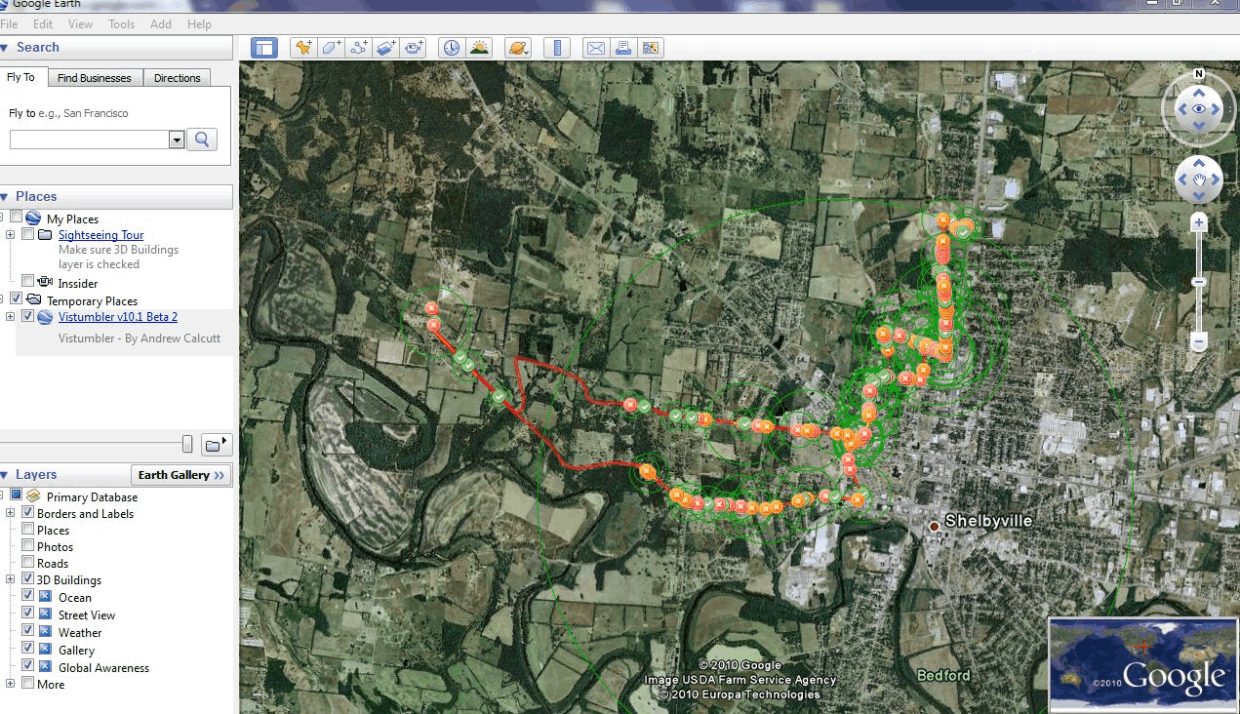
NetSurveyor’s unique approach makes reviewing recorded data a snap. NetSurveyor's playback mode is unique in that it shows you all the recorded data – that is, you do not press a ‘play’ button and then forced to watch minutes or hours of data scroll by in the hope that some unusual event will catch your eye. Other products, if they even offer a recording/playback feature, usually follow the “tape recorder” paradigm.

#WIFI STUMBLER WINDOWS PDF#
Generates reports in Adobe PDF format that include the list of access points and their properties along with images of each of the 6 diagnostic charts.The more (and different) ways you have at looking at data then the greater the chance something will catch your eye that you might otherwise miss if only a single type of chart were used. In addition to the grid that repeatedly updates information about each access point, there are 6 graphical, diagnostic views: (1) Timecourse of Beacon Qualities For Each Access Point, (2) Differential Display of Beacon Qualities for Each Access Point, (3) Usage of Each of the 802.11 b/g Channels, (4) Timecourse of the Usage of Each of the 802.11 b/g Channels, (5) Heatmap / Waterfall Chart of the 802.11 b/g Channels and (6) Channel Spectrogram of the 802.11 b/g Channels.NetSurveyor distinguishes itself from other tools in its category in the following ways: Just to be clear, the RSSI reflects the strength of the beacon as received by the STA – it isnot an indication of performance. In addition, the discovery tool reports the RSSI (Received Signal Strength Indication) for each AP, which is roughly an indication of how close the AP is to your current location (i.e. The way this works is that roughly every 100 mSec an AP sends an “I’m here” beacon – and the discovery tool (running on your laptop and using its 802.11 wireless adapter, also known as a station or STA) picks-up that beacon and adds the SSID to its list of known wireless networks. A discovery tool reports the Service Set Identifier (SSID) for each wireless network it detects, along with the channel used by the access point (AP) servicing that network.

The best known in this category is NetStumbler. NetSurveyor is a diagnostic tool that falls under the category of WiFi Scanners or 802.11 Network Discovery Tools. As a learning tool to help understand the relationship between access points (BSSIDs), wireless networks (SSIDs), and client stations (STAs).In a secure business environment, for use in detecting the presence of rogue access points.Conducting wireless site surveys where the installer is interested in learning about the coverage of a new or existing access point, roaming capability, presence of RF interference or “dead spots”, and optimum location of access points, their antennas and client stations.Reporting the presence of WiFi networks and local access points and the signal strengths of their beacons.Trouble-shooting an existing network or wireless environment that is performing poorly.

During the installation of a wireless network, as an aid in verifying the network is properly configured and antennas are positioned at locations to achieve efficient transmission / reception - that is, for use in verifying WiFi coverage and maximizing beacon signal strength.Applications for NetSurveyor include the following: Also, reports can be generated in Adobe PDF format. Data can be recorded for extended periods and played-back at a later date/time. The data is displayed using a variety of different diagnostic views and charts. Similar in purpose to NetStumbler, it includes many more features.


 0 kommentar(er)
0 kommentar(er)
